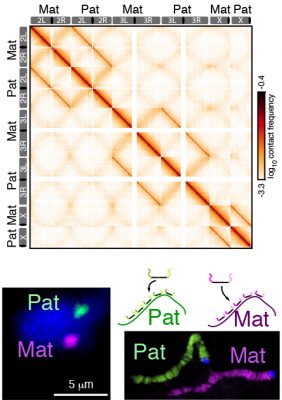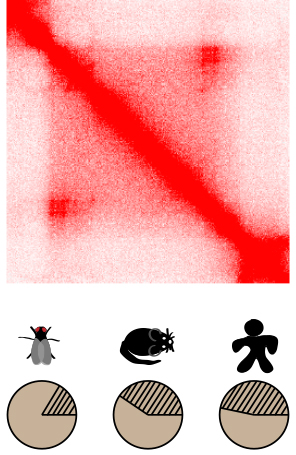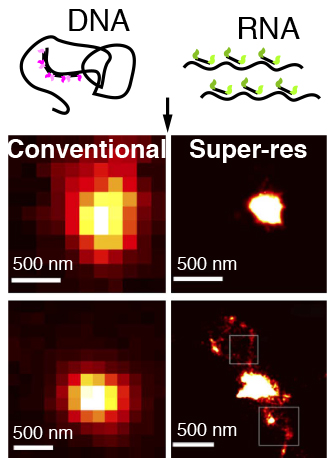
Multicellular organisms are composed of diverse cell types that originate from a single cell. Cellular identities are orchestrated in part through action of key factors on regulatory elements. In diploid organisms, complexity of regulatory interactions, which influence gene expression, is increased due to the presence of homologous maternal and paternal chromosomes. However, as much of our current view of cell diversity is derived from genome organization and regulation of either single cells or groups of cells, much less is known how parental genomes contribute to achieve this diversity. Moreover, it is unclear how this diversity evolutionarily relates to health and disease states. To this end, we deploy haplotype-specific regulatory genomics, bioinformatics, quantitative imaging, and genetics.

Integrate haplotype-specific imaging and genomics to dissect parental genome function
Recent development of haplotype-specific approaches allows robust distinction between homologous maternal and paternal chromosomal contacts in embryos and cells using genome-wide Hi-C as well as visualization of parental-specific regions using bioinformatically-designed oligo FISH probes (Oligopaints technology). These advances enable uncovering of how haplotype-specific contribution from parents shapes unique functional genome of individuals.

The role of transposons in genome organization
and function
The genome contains abundant, yet variable mobile genetic entities, termed transposable elements. We examine how constraints and impact of parental transposons may contribute to genome stability and integrity. These investigations will increase our fundamental understanding of evolutionary sensitivity of genome organization and function to transposons.

Single-cell chromatin dynamics during transcriptional switches
To achieve cellular identities dynamic and fine-tuned spatio-temporal regulation is essential when multipotent cells become specified into different lineages. We investigate plasticity in establishment and maintenance of cell type-specific identities using single-cell Oligopaints-based FISH technology at homolog-specific and multiplexed single-molecule super-resolution level.